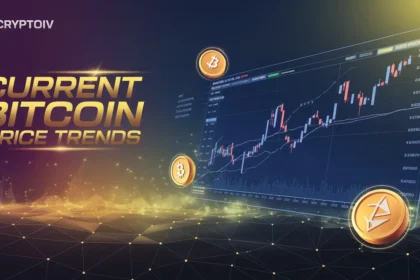Ethereum’s market performance has been turbulent lately, with significant price fluctuations and varying market drivers affecting its status. The importance of tracking Ethereum’s market performance cannot be overstated, especially for traders, analysts, and enthusiasts who need real-time data and insights. Recently, Ethereum faced an 8-month low, raising concerns about its market health. Key factors such as trading volume shifts and macroeconomic trends are playing a pivotal role in these price movements, impacting the overall sentiment toward Ethereum in the crypto landscape. Real-time Ethereum price movements and identifying key market drivers for Ethereum price are crucial for understanding these dynamics.
Current Ethereum Market Status
Ethereum’s current market status plays a pivotal role in shaping trading decisions and influencing overall market sentiment. In recent months, Ethereum has seen considerable price fluctuations and changes in trading volume, directly impacting both short-term traders and long-term investors. By understanding these dynamics, enthusiasts can better anticipate market movements and adapt their trading strategies accordingly.
Recent Ethereum Price Updates
Ethereum’s price has experienced notable volatility in September 2024. Following an 8-month low in August, Ethereum’s price fell by 22% in a single day, dropping to around $2,100. However, recent movements indicate a gradual recovery, with the price now hovering around the $2,400 mark. This fluctuation is partly attributed to macroeconomic factors such as fears of a global recession, prompting major investors to liquidate their crypto holdings, including Ethereum. Additionally, the launch of new financial products like Ether ETFs has influenced price dynamics, as some investors prefer to gain exposure to Ethereum through these funds rather than direct ownership.
Ethereum Trading Volume Trends
Ethereum’s trading volume has shown a direct correlation with its price movements. The recent downturn in Ethereum’s price was accompanied by significant changes in trading volume. During the downturn in early September, Ethereum experienced outflows of over $146 million. As a result, daily trading volumes fluctuated, reflecting the market’s cautious stance. When prices dipped, trading volumes spiked due to increased selling pressure from investors seeking to mitigate losses. Conversely, periods of price stabilization saw a relative decline in trading volumes, suggesting that investors were adopting a more “wait-and-see” approach.
| Date | Trading Volume (in Million USD) | Ethereum Price (USD) |
|---|---|---|
| September 1, 2024 | 1250 | 2300 |
| September 5, 2024 | 1600 | 2100 |
| September 10, 2024 | 1300 | 2200 |
| September 15, 2024 | 1100 | 2400 |
| September 20, 2024 | 1350 | 2350 |
| September 25, 2024 | 1450 | 2450 |
Note
These trends highlight the inverse relationship between Ethereum’s trading volume and price stability, with higher trading volumes often accompanying periods of price decline and market uncertainty.
Ethereum Market Sentiment Overview
Market sentiment around Ethereum is currently mixed. The recent price decline raised concerns about Ethereum’s ability to sustain its value in a turbulent market. Factors like macroeconomic fears and shifts in institutional trading have fueled bearish sentiment among investors. On the other hand, bullish sentiment persists in anticipation of upcoming technological upgrades and the potential approval of spot Ether ETFs. This optimism is reflected in the fact that over 62% of market participants expect Ethereum to reach its previous all-time high in 2024. Overall, Ethereum’s current market performance is driven by a complex interplay of market drivers, including macroeconomic factors, technological developments, and evolving investor sentiment.
Key Drivers Affecting Ethereum Price
Ethereum’s price movements are influenced by a variety of market drivers. These include macroeconomic factors, technological developments on the Ethereum network, and regulatory changes. Understanding how these elements affect Ethereum’s value is crucial for traders and investors to make informed decisions and anticipate future trends in the market.
Macroeconomic Factors
Macroeconomic factors have recently played a significant role in shaping Ethereum’s market performance. Global economic events, such as fears of a recession, have led to increased market volatility. For instance, the recent decline in Ethereum’s price to around $2,100 was largely attributed to concerns about an impending global recession. In response to these fears, investors withdrew over $528 million from crypto investment funds, with $146.3 million coming directly from Ethereum, indicating how sensitive the market is to broader economic signals.
Central bank interest rate changes also impact Ethereum’s price. Rate cuts generally lead to increased liquidity in the markets, potentially driving investors toward riskier assets like cryptocurrencies. Conversely, rate hikes can lead to capital outflows from the crypto market as investors seek safer investments. The correlation between global macroeconomic events and Ethereum’s price fluctuations demonstrates the interconnected nature of traditional finance and the crypto markets.
Network Upgrades and Developments
Technological advancements and upgrades within the Ethereum network have a direct impact on its market performance. Recent network upgrades aim to enhance Ethereum’s scalability, security, and efficiency, all of which are critical for maintaining its competitive edge. These upgrades not only impact the network’s functionality but also influence market perception and, subsequently, Ethereum’s price.
Major Upgrades and Their Effects on Price and Trading Volume:
- Ethereum 2.0 Phase 2:The transition to Ethereum 2.0 has been a major driver in shaping market sentiment. The upgrade promises to address issues like scalability and energy efficiency. The anticipation of this upgrade has previously led to price rallies as traders and investors positioned themselves for potential gains.
- The London Hard Fork (EIP-1559): This upgrade introduced a new fee structure aimed at making transaction fees more predictable. It also included a burning mechanism that removes a portion of ETH from circulation, reducing supply and potentially exerting upward pressure on price. The implementation of this upgrade correlated with a noticeable uptick in trading volume and a temporary price increase.
- StarkNet and Layer-2 Scaling Solutions: The adoption of layer-2 solutions like StarkNet aims to improve transaction speed and reduce costs. These developments have made Ethereum more attractive for decentralized applications (dApps) and decentralized finance (DeFi) projects, driving increased demand and trading activity.
Note
The market has generally received these upgrades positively, as they enhance Ethereum’s utility and address some of its long-standing issues. This has resulted in both short-term price fluctuations and a more stable long-term outlook for Ethereum.
Regulatory Changes and Institutional Trading
Regulatory changes and institutional trading activities significantly impact Ethereum’s market dynamics. Recently, regulatory scrutiny over cryptocurrencies has intensified, particularly in the United States and Europe. For example, the potential approval of spot Ether ETFs is a closely watched development that could affect Ethereum’s price trajectory. However, unlike Bitcoin ETFs, Ether ETFs face more regulatory hurdles, leading to uncertainty and price volatility.
Institutional trading also plays a crucial role in Ethereum’s market performance. Large-scale institutional investors’ actions, such as Jump Trading moving $315 million worth of ETH to exchanges, can lead to significant price shifts. Furthermore, the recent outflows from Ethereum investment products totaling $146.3 million indicate the influence of institutional sentiment on the market. Stablecoin inflows into the Ethereum market, often considered a sign of impending buying pressure, are another key indicator influenced by institutional trading patterns.
Ethereum’s Trading Patterns and Market Behavior
Ethereum’s trading patterns offer valuable insights into the cryptocurrency’s overall market behavior. By examining these patterns, traders and analysts can better understand the factors driving price movements, identify market trends, and make more informed trading decisions. Analyzing Ethereum’s trading behavior involves looking at short-term price fluctuations, identifying key support and resistance levels, and understanding how market liquidity impacts price dynamics.
Short-term Price Fluctuations
In recent weeks, Ethereum has exhibited notable short-term price fluctuations, creating both opportunities and challenges for traders. These fluctuations have been characterized by rapid changes in price within short time frames, often influenced by market sentiment, macroeconomic events, and technical factors. For instance, Ethereum experienced a sharp 22% drop in early September 2024, falling to approximately $2,100. Such sudden price movements can lead to heightened volatility, presenting risks for traders employing leveraged positions or those relying on short-term market predictions.
These fluctuations are often accompanied by a surge in trading volume, as market participants react to news events, regulatory developments, or changes in market sentiment. For day traders and swing traders, monitoring these short-term price movements is crucial. It enables them to capitalize on rapid price changes by implementing strategies like scalping or momentum trading. However, the volatile nature of short-term price fluctuations also necessitates robust risk management practices to mitigate potential losses.
Support and Resistance Levels
Key support and resistance levels play a vital role in shaping Ethereum’s market activity. These levels serve as psychological barriers where the price tends to pause or reverse direction. Identifying these points can help traders predict potential price movements and make more informed decisions.
Key Support and Resistance Points to Monitor:
- Support Level at $2,000: This level has acted as a strong support in recent weeks, with Ethereum’s price rebounding multiple times when it approached this threshold. If this level is breached, it could signal further downward movement.
- Resistance Level at $2,500: Ethereum has encountered resistance around this level, struggling to maintain momentum above this point. A decisive break above $2,500 could pave the way for a more sustained rally.
- Support Level at $1,800: In case of a significant market downturn, $1,800 serves as another critical support level that could come into play, acting as a potential floor for Ethereum’s price.
- Resistance Level at $2,700: A break above this level would indicate a strong bullish trend, potentially leading to further gains.
Monitoring these support and resistance levels can help traders identify entry and exit points, manage risk, and develop effective trading strategies. The recent price action around these levels underscores their importance in guiding Ethereum’s market behavior.
Correlation with Market Liquidity
Market liquidity significantly influences Ethereum’s price movements and trading patterns. High liquidity typically results in narrower bid-ask spreads, reducing transaction costs for traders and allowing them to execute large trades without causing significant price slippage. Conversely, low liquidity can lead to increased volatility, with even relatively small trades causing notable price shifts.
Recently, Ethereum’s liquidity has been impacted by broader market conditions, including macroeconomic factors and investor sentiment. For example, during periods of heightened market uncertainty, such as the recent fears of a global recession, liquidity in the Ethereum market can dry up, leading to more pronounced price swings. Additionally, institutional trading activities, including the movement of large ETH holdings, can influence market liquidity and, consequently, price movements.
The correlation between trading volume and liquidity is also evident. As trading volume increases, liquidity tends to improve, providing a more stable market environment. Conversely, when trading volume declines, liquidity can deteriorate, leading to increased price volatility. Therefore, understanding the relationship between Ethereum’s price and market liquidity is essential for traders seeking to navigate the market effectively.
Immediate Impacts on Ethereum Market
Recent events have had a significant immediate impact on Ethereum’s market performance. Key market occurrences, such as potential ETF approvals, regulatory developments, and technological upgrades, have influenced Ethereum’s price movements and market sentiment. These changes have led to rapid shifts in market dynamics, affecting both short-term and long-term trading strategies.
Ethereum Price Reaction to Major Market Events
Ethereum’s price has shown a high sensitivity to major market events. One of the most impactful developments in recent months has been the potential approval of Ethereum exchange-traded funds (ETFs). While Bitcoin ETFs have garnered significant attention and approvals, Ether ETFs have faced more regulatory scrutiny, resulting in price volatility. Market anticipation around these ETF decisions has led to rapid price fluctuations as traders react to news of delays or potential approvals.
Regulatory changes have also played a crucial role in shaping Ethereum’s price. Increased regulatory scrutiny in key markets, particularly in the United States and Europe, has contributed to uncertainty. This was evident when Ethereum faced an 8-month low, with market participants reacting to fears of a global recession and a wave of regulatory actions. Such events prompted a shift in market sentiment, resulting in heightened volatility and a decline in investor confidence.
Network upgrades, such as the transition to Ethereum 2.0 and the implementation of the London Hard Fork (EIP-1559), have further influenced Ethereum’s price dynamics. While these upgrades aim to improve the network’s scalability and reduce transaction fees, they have also sparked short-term price movements. For example, the London Hard Fork introduced a burning mechanism that reduces the circulating supply of ETH, creating a deflationary effect that initially drove prices upward due to the perceived reduction in supply.
Short-term Price Outlook
The short-term outlook for Ethereum’s price is influenced by both the immediate impacts of recent events and the current market status. Currently, Ethereum is trading around the $2,400 range, with market analysts predicting a potential move towards its previous highs, contingent on market conditions and regulatory developments. Short-term price movements are expected to remain volatile, with the upcoming regulatory decisions on Ether ETFs likely serving as a significant catalyst. Market participants should monitor these events closely, as they could trigger sharp price swings and impact market sentiment.
Ethereum’s trading patterns suggest that key support levels around $2,000 and resistance levels near $2,500 will be crucial in the coming weeks. Market liquidity and trading volume will also play a vital role in determining the price direction. A sustained increase in trading volume, coupled with positive regulatory news or network upgrades, could bolster Ethereum’s price in the short term. Conversely, further regulatory tightening or unfavourable macroeconomic conditions could lead to additional downward pressure on the asset.
Related Topics for Further Reading
- Current Bitcoin Price Trends
- Daily Cryptocurrency Market Overview and Trends
- Market Reactions to Presidential Debates
- Market Effects of DeFi TVL Decline
- Ethereum’s Dominance and Sentiment Shifts
Ethereum’s current market performance is shaped by various factors, including recent market events, technological developments, and regulatory changes. Key drivers such as macroeconomic conditions, network upgrades, and institutional trading activities have led to significant fluctuations in Ethereum’s price. Short-term price movements remain sensitive to news events, with market sentiment influenced by the potential approval of Ether ETFs, regulatory developments, and global economic trends.
Ethereum’s trading patterns, including short-term price fluctuations and the identification of key support and resistance levels, offer insights into its market behavior. Market liquidity continues to play a pivotal role in Ethereum’s price movements, influencing trading patterns and volatility. As Ethereum navigates these dynamic market conditions, traders and investors must remain vigilant, monitoring immediate impacts and evolving market drivers to make informed decisions.



















